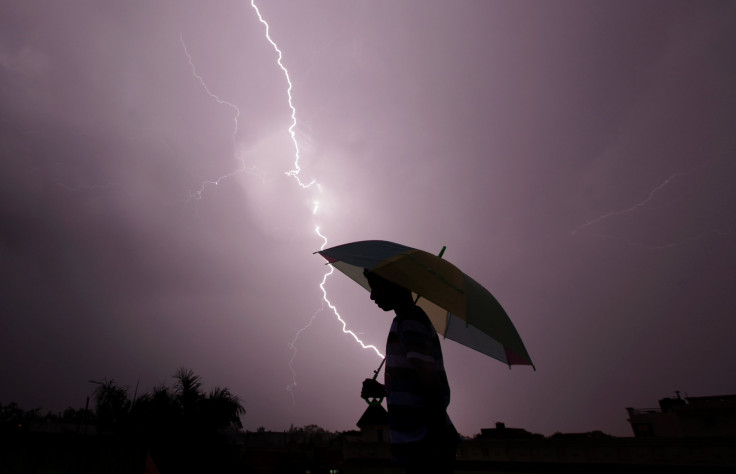Lightning Strikes In India Kill Dozens In 24 Hours

In April, 330 million people — more than the population of the United States — in India were living under severe drought caused by a heat wave. By May 20, the heat had intensified to cross 124 degrees Fahrenheit in the western state of Rajasthan, the highest-ever recorded temperature in India. As the country waited for relief from the oppressive heat, the monsoon finally arrived in the second week of June, bringing rains, thunder and lightning.
And also death.
Reports from eastern and central states of the country in the last few days suggest over a hundred people have died in lightning strikes, with dozens dying in the last 24 hours alone. Most of the deaths Tuesday were reported from the eastern state of Bihar.
The state’s disaster management department said Wednesday at least 38 people were confirmed dead and 24 others were reported injured. It added that it was still in the process of receiving and compiling data from various districts, and that a final death toll would be announced later.
Other reports put the death toll in Bihar — the most severely affected state — between 47 and 56 people. Between seven and 10 people were also reported killed in Jharkhand, which borders Bihar to the south. In Uttar Pradesh, to the east of Bihar, reports claim between 20 and 42 people have died. And at least one report also mentioned 16 deaths in Madhya Pradesh, which lies south of Uttar Pradesh.
Indian Prime Minister Narendra Modi expressed his grief on Twitter.
Deeply anguished by loss of lives due to lightning in parts of UP, Bihar, Jharkhand & other parts of the nation over the last few days: PM
— PMO India (@PMOIndia) June 22, 2016
Lightning strikes are common in India, especially during the monsoon season, which starts in June and ends in October, and cause thousands of deaths every year, most victims being farmers working in their fields with no tall structures nearby.

According to the latest available data from India’s National Crime Records Bureau, more than 2,500 people died in the country from lightning strikes in 2014, making it the biggest cause of accidental death attributable to natural causes. A distant second on that list was heat stroke, which caused less than half the number of deaths from lightning strikes.
There have also been incidents of elephants dying from lightning strikes in India, including one earlier in June that killed three pachyderms and another in 2007 when five elephants were killed.
© Copyright IBTimes 2024. All rights reserved.





















